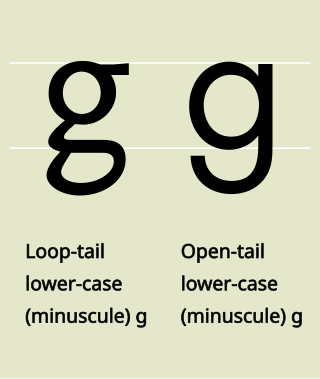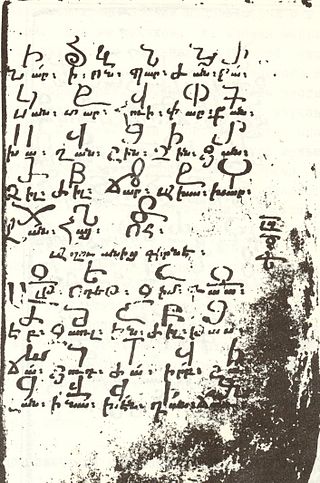Coptic may refer to:
Coptic may refer to:

The Coptic Orthodox Church, also known as the Coptic Orthodox Patriarchate of Alexandria, is an Oriental Orthodox Christian church based in Egypt. The head of the church and the See of Alexandria is the pope of Alexandria on the Holy Apostolic See of Saint Mark, who also carries the title of Father of fathers, Shepherd of shepherds, Ecumenical Judge and the 13th among the Apostles. The See of Alexandria is titular. The Coptic pope presides from Saint Mark's Coptic Orthodox Cathedral in the Abbassia District in Cairo. The church follows the Coptic Rite for its liturgy, prayer and devotional patrimony. Adherents of the Coptic Orthodox Church make up Egypt's largest and most significant minority population, and the largest population of Christians in the Middle East and North Africa (MENA). They make up the largest percentage of approximately 20 million Christians in Egypt.

Coptic is a group of closely related Egyptian dialects, representing the most recent developments of the Egyptian language, and historically spoken by the Copts, starting from the third century AD in Roman Egypt. Coptic was supplanted by Arabic as the primary spoken language of Egypt following the Arab conquest of Egypt and was slowly replaced over the centuries. Coptic has no native speakers today, although it remains in daily use as the liturgical language of the Coptic Orthodox Church and of the Coptic Catholic Church. Innovations in grammar and phonology and the influx of Greek loanwords distinguish Coptic from earlier periods of the Egyptian language. It is written with the Coptic alphabet, a modified form of the Greek alphabet with several additional letters borrowed from the Demotic Egyptian script.
The Coptic script is the script used for writing the Coptic language, the most recent development of Egyptian. The repertoire of glyphs is based on the uncial Greek alphabet, augmented by letters borrowed from the Egyptian Demotic. It was the first alphabetic script used for the Egyptian language. There are several Coptic alphabets, as the script varies greatly among the various dialects and eras of the Coptic language.
Egyptian describes something of, from, or related to Egypt.

Pope Shenouda III was the 117th Pope of Alexandria and Patriarch of the See of St. Mark. His papacy lasted 40 years, 4 months, and 4 days, from 14 November 1971 until his death.

Copts are a Christian ethnoreligious group indigenous to North Africa who have primarily inhabited the area of modern Egypt since antiquity. They are the largest Christian denomination in Egypt and the Middle East, as well as in Sudan and Libya. Copts in Egypt account for roughly 5–15 percent of the Egyptian population; Copts in Sudan account for 1 percent of the Sudanese population, while Copts in Libya similarly account for 1 percent of the Libyan population.

The ankh or key of life is an ancient Egyptian hieroglyphic symbol used to represent the word for "life" and, by extension, as a symbol of life itself.

Michael Everson is an American and Irish linguist, script encoder, typesetter, type designer and publisher. He runs a publishing company called Evertype, through which he has published over one hundred books since 2006.

In graphemics and typography, the term allograph is used of a glyph that is a design variant of a letter or other grapheme, such as a letter, a number, an ideograph, a punctuation mark or other typographic symbol. In graphemics, an obvious example in English is the distinction between uppercase and lowercase letters. Allographs can vary greatly, without affecting the underlying identity of the grapheme. Even if the word "cat" is rendered as "cAt", it remains recognizable as the sequence of the three graphemes ⟨c⟩, ⟨a⟩, ⟨t⟩.

The Meroitic script consists of two alphasyllabic scripts developed to write the Meroitic language at the beginning of the Meroitic Period of the Kingdom of Kush. The two scripts are Meroitic Cursive, derived from Demotic Egyptian, and Meroitic Hieroglyphs, derived from Egyptian hieroglyphs. Meroitic Cursive is the most widely attested script, comprising ~90% of all inscriptions, and antedates, by a century or more, the earliest, surviving Meroitic hieroglyphic inscription. Greek historian Diodorus Siculus described the two scripts in his Bibliotheca historica, Book III (Africa), Chapter 4. The last known Meroitic inscription is the Meroitic Cursive inscription of the Blemmye king, Kharamadoye, from a column in the Temple of Kalabsha, which has recently been re-dated to AD 410/ 450 of the 5th century. Before the Meroitic Period, Egyptian hieroglyphs were used to write Kushite names and lexical items.

The writing systems of Africa refer to the current and historical practice of writing systems on the African continent, both indigenous and those introduced. In many African societies, history generally used to be recorded orally despite most societies having developed a writing script, leading to them being termed "oral civilisations" in contrast to "literate civilisations".

The Caucasian Albanian script was an alphabetic writing system used by the Caucasian Albanians, one of the ancient Northeast Caucasian peoples whose territory comprised parts of the present-day Republic of Azerbaijan and Dagestan.

Christianity is the second largest religion in Egypt. The vast majority of Egyptian Christians are Copts. As of 2019, Copts in Egypt make up approximately 10 percent of the nation's population, with an estimated population of 9.5 million or 10 million. In 2018, approximately 90% of Egyptian Christians were Coptic Orthodox.

Coptic history is the part of the history of Egypt that begins with the introduction of Christianity in Egypt in the 1st century AD during the Roman period, and covers the history of the Copts to the present day. Many of the historic items related to Coptic Christianity are on display in many museums around the world and a large number is in the Coptic Museum in Coptic Cairo.

The persecution of Copts and discrimination against Coptic Orthodox Christians are historic and widespread issues in Egypt. Their treatment is indicative of the poor status of Christians in the Middle East more widely, despite the fact that the religion is native to the Middle East, and that Christianity in Egypt dates back to the Roman era. Copts are the indigenous Christians in Egypt, usually Oriental Orthodox, who currently make up 10% of the population—the largest religious minority of that country. Copts have cited instances of persecution throughout their history and Human Rights Watch has noted "growing religious intolerance" and sectarian violence against Coptic Christians in recent years, as well as a failure by the Egyptian government to effectively investigate properly and prosecute those responsible. However, as political violence is common many churches believe that the attacks against the church are not religious statements, instead political statements. Since 2011, hundreds of Egyptian Copts have been killed in sectarian clashes, and many homes, churches and businesses have been destroyed. In just one province (Minya), 77 cases of sectarian attacks on Copts between 2011 and 2016 have been documented by the Egyptian Initiative for Personal Rights. The abduction and disappearance of Coptic Christian women and girls also remains a serious ongoing problem.

Copts have a long history as a significant Christian minority in Egypt, in which Muslim adherents form the majority. Coptic Christians lost their majority status in Egypt after the 14th century and the spread of Islam in the entirety of North Africa.
The 2011 Imbaba church attacks were a series of attacks that took place in Egypt on 7 May 2011 against Coptic Christian churches in the poor working-class neighborhood of Imbaba in Giza, near Cairo. The attacks were blamed on Salafi Muslims, and the attacks began when the Muslims attacked the Coptic Orthodox church of Saint Mina, where they alleged a Christian woman was being held against her will because she wanted to convert to Islam. The attacks resulted in the burning of 3 Coptic Orthodox churches, and the destruction of many Christian-owned houses and businesses. In addition, 15 people were killed in the attacks, and about 232 injured. Among those killed were four Christians and six Muslims, while two other bodies were still unidentified. Imbaba has been known to be a stronghold of Muslim fundamentalists since the 1970s, but also comprises a significant number of Coptic Christians.
Copts in Egypt refers to Coptic Christians born in or residing in Egypt.

Coptic nationalism refers to the nationalism of the Copts, a Christian ethnic and religious minority that primarily inhabit the area of modern Egypt. Coptic nationalism does not have a claim for a Coptic nation but asks for an equal position for Copts in Egypt. Most Copts live in the south of Egypt but the largest concentrations of Copts lives in Cairo and Alexandria. The Copts, like the rest of Egyptians, are descended from the pharaonic inhabitants of Egypt. Most ethnic Copts belongs to the Coptic Orthodox Church. Copts number between 10-15 percent of the Egyptian population of 104 million

Copto-Arabic literature is the literature of the Copts written in Arabic. It is distinct from Coptic literature, which is literature written in the Coptic language.